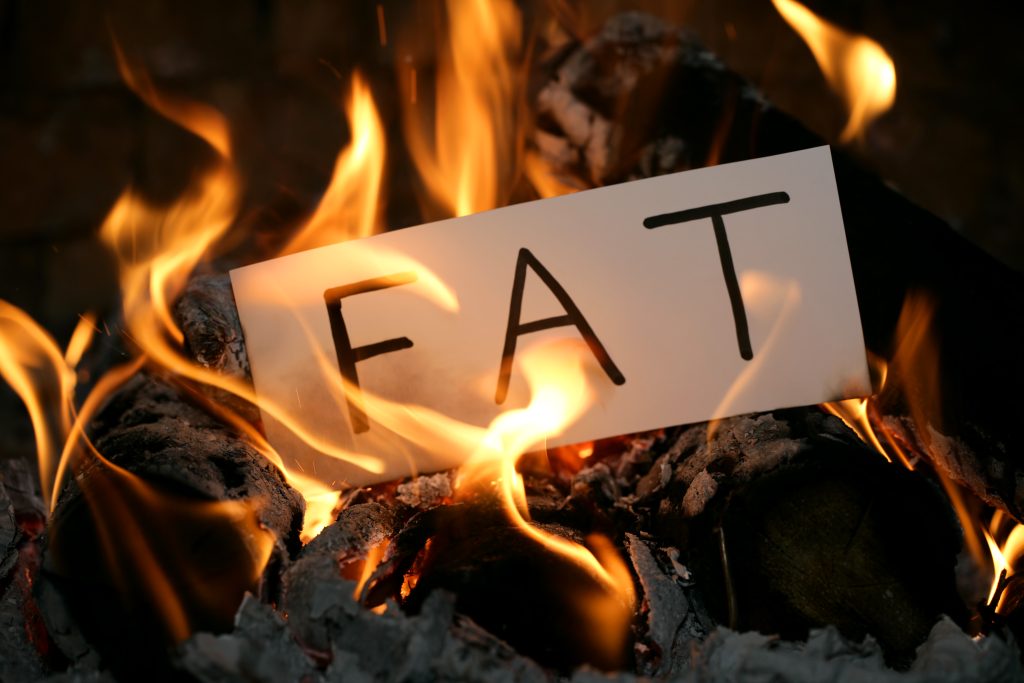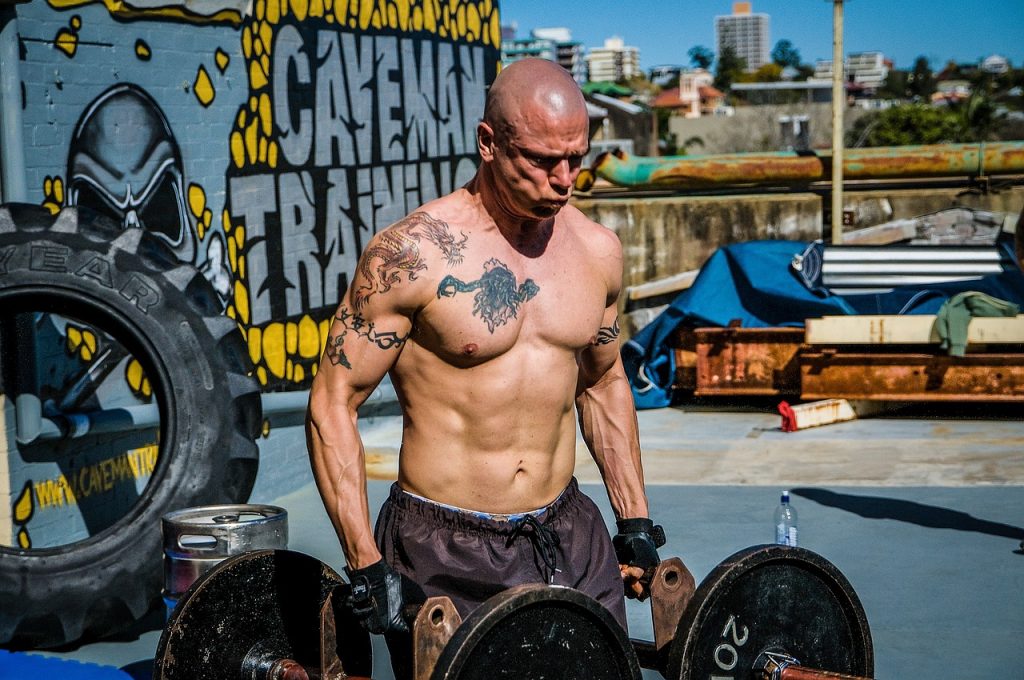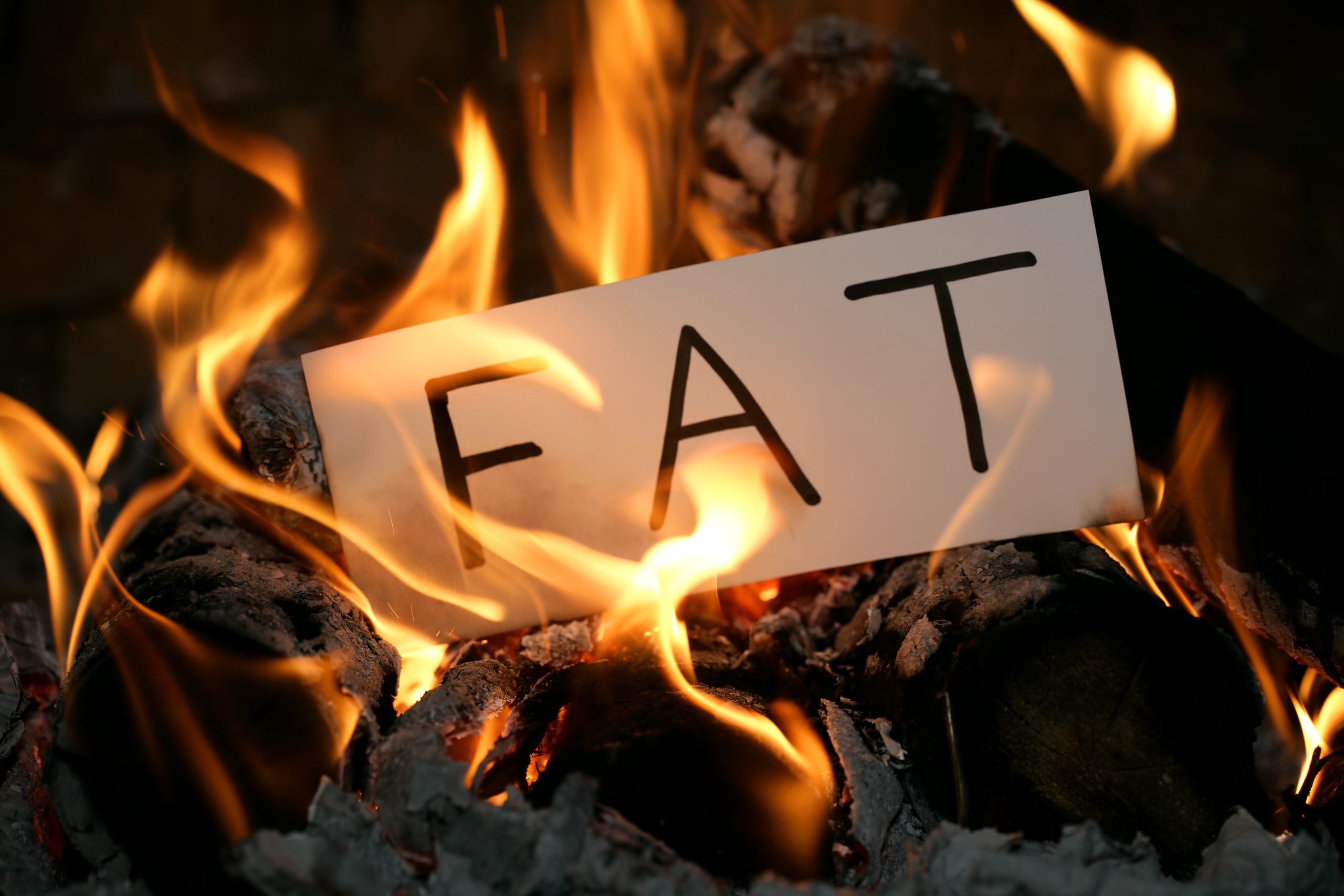What is burning fat about?

Fat burning, also known as fat loss or weight loss, refers to the process by which the body utilizes stored fat as a fuel source to meet energy demands. When we consume more calories than our bodies need for daily activities and metabolic functions, the excess calories are stored in adipose tissue as triglycerides, forming fat reserves. To tap into these reserves and reduce overall body fat percentage, creating a caloric deficit is essential.
Creating a caloric deficit can be achieved through various means, such as reducing calorie intake through diet modifications and increasing energy expenditure through physical activity. Engaging in workouts that specifically target fat burning can further enhance this process by increasing the body’s metabolic rate and promoting the breakdown of stored fat.
During exercise, the body primarily uses carbohydrates for quick energy. However, during longer or more intense workouts, especially those targeting fat burning like cardio or HIIT, the body switches to utilizing stored fat for fuel. This shift often occurs during moderate-intensity activities lasting more than 20 minutes when glycogen stores are depleted.
While exercise plays a significant role in fat burning efforts, nutrition also plays a crucial part in achieving and maintaining weight loss goals. A balanced diet rich in protein, healthy fats, complex carbohydrates, vitamins, and minerals supports overall health and metabolism while providing the necessary nutrients for energy production during workouts.
Ultimately, consistency is key when it comes to fat burning. Establishing realistic goals, staying dedicated to a tailored workout routine supported by healthy eating habits, and being patient with the process are vital components of achieving long-term success in reducing body fat and improving overall fitness levels.
Correct diet and workouts to burn off fat
Achieving fat loss is a multifaceted journey that hinges on a well-structured diet and a targeted workout regimen. To effectively burn off fat, it’s crucial to create a caloric deficit by consuming fewer calories than you expend.
Plate up colorful vegetables like spinach, broccoli, peppers, and sweet potatoes for essential vitamins, minerals, and fiber. Whole grains like quinoa, brown rice, and oats can provide sustained energy levels while avoiding processed sugars helps in curbing unnecessary caloric intake.
In terms of meal timing, aim for smaller but frequent meals to keep your metabolism active throughout the day and prevent overeating during main meals. As for hydration, prioritize water intake to stay hydrated and maintain proper bodily functions.
When it comes to working out for fat loss, include a mix of cardiovascular exercises and strength training in your routine. Cardio sessions such as running, cycling, or high-intensity interval training (HIIT) can effectively burn calories and boost your cardiovascular health.
Incorporate strength training exercises focusing on major muscle groups such as squats, lunges, deadlifts along with upper body exercises like push-ups and rows. Building muscle mass not only enhances your metabolism but also gives shape to your body as the fat sheds away.
Create a workout schedule that includes both cardio and strength training sessions throughout the week. Aim for at least 150 minutes of moderate aerobic activity or 75 minutes of vigorous activity per week alongside two or more days of strength training targeting different muscle groups each session.
Consistency is key when pursuing fat loss goals – pair your tailored diet plan with an appropriate workout routine designed to maximize calorie burn while preserving lean muscle mass for sustainable results over time.
Top 10 workouts to do to burn fat off!!
1. High-Intensity Interval Training (HIIT):
HIIT workouts are characterized by short bursts of intense exercise followed by brief periods of rest or lower-intensity activity. These workouts typically last around 20-30 minutes but can be highly effective for burning fat due to their ability to elevate heart rate and metabolism both during and after the workout. HIIT can be tailored to various exercises such as sprints, jumping jacks, or bodyweight exercises like burpees and mountain climbers, making it adaptable to different fitness levels and preferences.
2. Running or Jogging:
Running or jogging is a classic form of cardiovascular exercise that engages large muscle groups and burns a significant number of calories. Whether on a treadmill or outdoors, running at a moderate to high intensity can help increase endurance, improve cardiovascular health, and effectively contribute to fat loss. Plus, it’s a versatile exercise that can be easily incorporated into one’s routine with minimal equipment needed.

3. Cycling:
Cycling, whether outdoors on a road bike or indoors on a stationary bike, provides an excellent cardiovascular workout while being gentle on the joints. It engages the lower body muscles, including the quadriceps, hamstrings, and glutes, while also providing a calorie-burning aerobic exercise. Adjusting the intensity and duration of cycling sessions can help individuals tailor their workouts to their fitness level and fat loss goals.
4. Jump Rope:
Jumping rope is a simple yet highly effective fat-burning exercise that requires minimal equipment and space. It is a high-intensity cardiovascular workout that engages multiple muscle groups, including the calves, thighs, shoulders, and core. Jumping rope can quickly elevate heart rate, boost metabolism, and improve coordination and agility, making it an efficient addition to any fat loss workout routine.
5. Circuit training:
Circuit training combines strength training exercises with cardiovascular intervals in a fast-paced, continuous workout format. By alternating between strength exercises (such as squats, lunges, push-ups, and planks) and cardio movements (such as jumping jacks, high knees, and mountain climbers), circuit training keeps the heart rate elevated while challenging muscles throughout the body. This results in increased calorie burn, improved muscular endurance, and enhanced fat loss.
6. Swimming:
Swimming is a full-body workout that provides both cardiovascular and muscular benefits while being low-impact on the joints. It engages all major muscle groups, including the arms, legs, core, and back, while also providing an effective cardiovascular workout. Swimming at a moderate to vigorous intensity can help individuals burn calories, improve lung capacity, and tone muscles, making it an ideal exercise for fat loss and overall fitness.
7. Rowing:
Rowing is a total-body workout that primarily targets the muscles of the back, legs, and core while providing a challenging cardiovascular exercise. Using a rowing machine, individuals can perform a series of rowing strokes that simulate the motion of rowing a boat, effectively engaging both the upper and lower body muscles. Rowing workouts can be tailored to different fitness levels and goals by adjusting resistance levels and stroke intensity, making it a versatile option for fat loss and strength building.
8. Bodyweight exercises:
Bodyweight exercises, such as burpees, lunges, squats, and push-ups, utilize the individual’s body weight as resistance to build strength, improve endurance, and burn fat. These exercises can be performed anywhere, requiring minimal to no equipment, making them accessible to individuals of all fitness levels. By incorporating a variety of bodyweight movements into a workout routine, individuals can target multiple muscle groups, elevate heart rate, and effectively contribute to fat loss and muscle toning.
9. Tabata Training:
Tabata training is a high-intensity interval training (HIIT) protocol that consists of performing a single exercise at maximum effort for 20 seconds, followed by 10 seconds of rest, repeated for a total of eight rounds (four minutes). This intense workout format is designed to push individuals to their limits, elevate heart rate, and maximize calorie burn in a short amount of time. Tabata can be applied to various exercises, including bodyweight movements, cardio drills, or weighted exercises, making it a versatile and efficient option for fat loss and improving cardiovascular fitness.
10. Plyometic exercises:
Plyometric exercises involve explosive movements that rapidly stretch and contract muscles, such as jump squats, box jumps, and plyo push-ups. These dynamic movements require significant energy expenditure and engage fast-twitch muscle fibers, leading to increased calorie burn and improved power and athleticism. Plyometric exercises can be incorporated into a workout routine to enhance fat loss, improve cardiovascular health, and boost overall performance in various sports and activities.

Conclusion
In conclusion, achieving fat loss is a holistic process that requires dedication to both a well-structured diet and a consistent workout regimen. By focusing on creating a caloric deficit through mindful eating, including balanced portions of lean proteins, healthy fats, colorful vegetables, whole grains, and staying hydrated, you set the stage for success.
Pairing this with a workout routine that combines cardiovascular exercise to burn calories and improve heart health with strength training to build muscle mass and support metabolism, you can optimize your fat loss journey. Remember that consistency, patience, and listening to your body are key components in reaching your goals. Embrace the journey, stay committed to your health and wellness goals, and celebrate the progress you make along the way towards a healthier, fitter you.
Thanks for reading!! I hope this article was very helpful, while your at it come take a look at this KUYUC Battle Rope to help you burn the fat off!!

